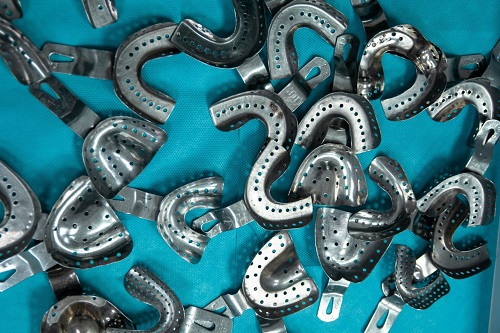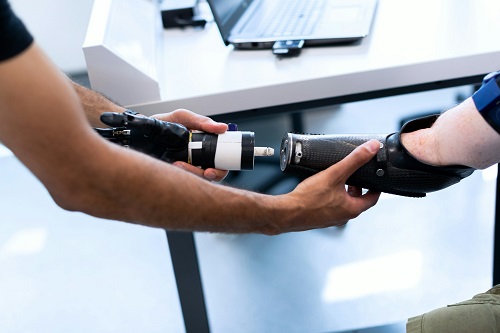The advent of 3D printing technology has been a game-changer across various industries, and the impact of medical 3D printing is nothing short of revolutionary. As we approach TCT Asia 2024, the significance of this technology in driving medical innovation is becoming increasingly apparent. This article delves into the latest developments in 3D printing, particularly in the realms of customized implants, surgical models, and bioprinting, highlighting the anticipated highlights at TCT Asia 2024.

Expected Highlights of 3D Printing Technology at TCT Asia 2024
TCT Asia 2024 is poised to showcase a plethora of innovative 3D printing technologies and products that are set to redefine medical practices. Among the anticipated highlights are advancements in customized implants and surgical models, which are designed to improve patient outcomes and streamline surgical procedures. These developments are not just incremental; they represent a paradigm shift in how medical devices are conceptualized and manufactured.
Innovations in Customized Medical Devices
As the medical field continues to push the boundaries of innovation, the development of customized medical devices stands out as a beacon of progress. They offer patient-specific solutions that enhance surgical precision, treatment outcomes, and patient care.
1. Precision Implant Design
Customized implants are at the forefront of medical 3D printing innovations. The ability to create patient-specific implants that perfectly match the anatomy of the individual is a significant advantage over traditional, one-size-fits-all implants. This customization can lead to better fit, reduced recovery times, and improved long-term outcomes. Moreover, 3D printing allows for intricate designs that can mimic the structure of natural bone, as seen in the advancements reported by "3D Printing in Medicine" (BioMed Central).[5]
2. Surgical Planning and Model Making
Surgical planning and model making have also been transformed by 3D printing. Doctors can now create accurate models of a patient's anatomy to rehearse complex surgeries before the actual procedure. This not only increases the chances of success but also reduces the risks associated with surgery. The integration of 3D printing in preoperative planning is a testament to the technology's transformative power in the operating room.[3]
3. Micro-Nano 3D Printing in Medicine
A groundbreaking development in micro-nano 3D printing showed how this technology is being used to create vascularized organ-on-a-chip models. These models simulate the structure and function of human organs, providing a platform for researching targeted drug delivery strategies. The use of magnetically controlled micro-nano robots within these models represents a significant leap forward in the field of bioengineering. These robots can navigate through the microfluidic channels of the organ-on-a-chip, offering a controlled and precise method for studying drug interactions and efficacy at a microscale level.[7]
The potential applications of micro-nano 3D printing in medicine extend beyond organ-on-a-chip models. This technology is also being utilized to create intricate scaffolds for tissue engineering, where the scaffold's design can be customized to mimic the natural extracellular matrix of various tissues. By adjusting the pore size, structure, and mechanical properties of these scaffolds, researchers can better control cell growth and tissue regeneration, leading to more effective regenerative therapies.[6]

Future Outlook on 3D Printing Technology Enhancing Medical Quality
The future of 3D printing in medicine is not only promising but also rapidly evolving. As we look ahead, TCT Asia 2024 is set to be a pivotal event that will further propel the medical applications of this transformative technology. The exhibition, taking place from May 7-9, 2024, in Shanghai, China, is poised to be the epicenter of innovation, showcasing the latest advancements, applications, and trends in 3D printing within the medical field.
To stay updated on the latest news, announcements, and developments leading up to TCT Asia 2024, we encourage you to visit the official website and follow our Facebook page. By engaging with these platforms, you can ensure that you are part of the conversation and ready to embrace the future of medical innovation.
Conclusion
In summary, the innovative applications of 3D printing technology in the medical field are vast and varied. From customized implants to surgical models and bioprinting, the potential impacts on patient care are profound. TCT Asia 2024 is set to be a pivotal event in promoting the development and adoption of these technologies, showcasing the latest breakthroughs and setting the stage for future advancements in medical 3D printing. As the medical community and industry leaders converge in Shanghai, we can expect a surge of new ideas and innovations that will continue to shape the future of healthcare.
Foot Notes
1. "3D Printing in Medicine." Biomed Central. Accessed [April 12, 2024]. https://threedmedprint.biomedcentral.com/
2. "3D Printing in medicine: Technology overview and drug delivery." ScienceDirect. Accessed [April 12, 2024]. https://www.sciencedirect.com/science/article/pii/S2666964121000321
3. "Medical Applications of 3D Printing | FDA." FDA. Accessed [April 12, 2024]. https://www.fda.gov/medical-devices/3d-printing-medical-devices/medical-applications-3d-printing
4. "The role of three-dimensional printing in healthcare and medicine." ScienceDirect. Accessed [April 12, 2024]. https://www.sciencedirect.com/science/article/pii/S0264127520304743
5. "3D Printing in Medicine | ScienceDirect." ScienceDirect. Accessed [April 12, 2024]. https://www.sciencedirect.com/book/9780323898317/3d-printing-in-medicine
6. "The Role of 3D Printing in Medical Applications: A State of the Art." NCBI. Accessed [April 12, 2024]. https://www.ncbi.nlm.nih.gov/pmc/articles/PMC6451800/
7. "Micro/Nano 3D printing." Worker CN. Accessed [April 12, 2024]. https://www.workercn.cn/c/2023-12-24/8090154.shtml
Join us at TCT Asia, connect with industry innovators as you explore the entire AM ecosystem including design, materials, hardware, software, post-processing, and quality. 10,000+ professionals will unite to hear about the latest trends, explore the latest immersive AM technologies and find solutions to their AM challenges.

TCT ASIA 2024
Tuesday 7th May 09:00 - 17:30
Wednesday 8th May 09:00 - 17:30
Thursday 9th May 09:00 - 15:00
NECC(Shanghai)7.1&8.1H